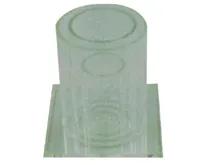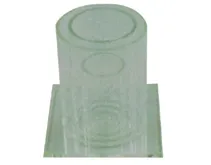ADA MED SUPPLY LIMITED
Phone:+86 19937901373
Tel:+86-0379-65160607
Email:adaanatomy@adaanatomy.com

Article tag: New knotting training model,Medical model

In the vast starry sky of medicine, excellence and precision in surgical skills are undoubtedly important goals pursued by doctors. Knot tying is a key step in surgery, and its technical proficiency is directly related to the success of the surgery. In order to help doctors improve their skills, we have specially launched a new knotting training model, which will become a must-have for doctors to improve their skills.

This new knotting training model uses cutting-edge simulation technology to accurately simulate knotting operations in real surgical scenarios. Whether it is routine knotting during surgery or emergency knotting under special circumstances, the model can be realistically reproduced, allowing doctors to practice immersively. Through repeated practice, doctors can gradually become familiar with and master various knotting techniques, improving the accuracy and speed of surgical operations.
In addition to its high degree of simulation, the new knotting training model also has intelligent features. The model has built-in advanced sensors and data analysis systems, which can capture the details of the doctor's operation in real time, and conduct analysis and evaluation. Doctors can understand their own operating habits, strengths and weaknesses through interaction with the model, so they can make targeted improvements. This intelligent feedback mechanism helps doctors improve their knotting skills faster and reduce surgical errors.
In addition, the new knotting training model is flexible and scalable. Doctors can customize the difficulty of the model and simulation scenarios according to their actual needs. Whether you are a beginner or an experienced doctor, you can choose a practice mode that suits you based on your skill level. This personalized practice method helps doctors improve their knot-tying skills more efficiently.
The emergence of the new knotting training model not only provides doctors with a new practical platform, but also brings revolutionary changes to medical education. Medical schools and hospitals can use models as teaching tools to develop students' practical abilities and skill levels. Through model demonstrations and practical exercises, students can more intuitively understand the key points and difficulties of knotting technology and improve learning results.
At the same time, the new knotting training model can also be used in clinical research and experiments. Doctors can use the model to conduct experiments and research on various knotting techniques and explore new surgical methods and techniques. This kind of experimentation and research helps promote progress and development in the medical field and brings better treatment effects and quality of life to patients.
In short, the new knotting training model has become a must-have for doctors to improve their skills due to its high degree of simulation, intelligence, flexibility and scalability. We believe that with the help of this model, doctors will be able to face various surgical challenges with more confidence and provide patients with more accurate and efficient medical services. Let us look forward to the wide application and excellent performance of the new knotting training model in the medical field!